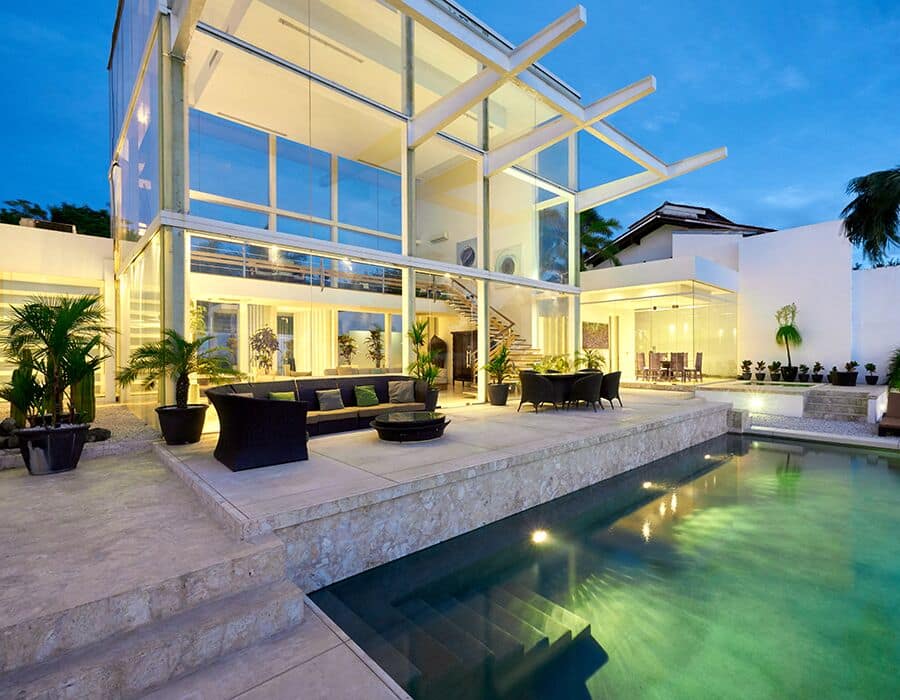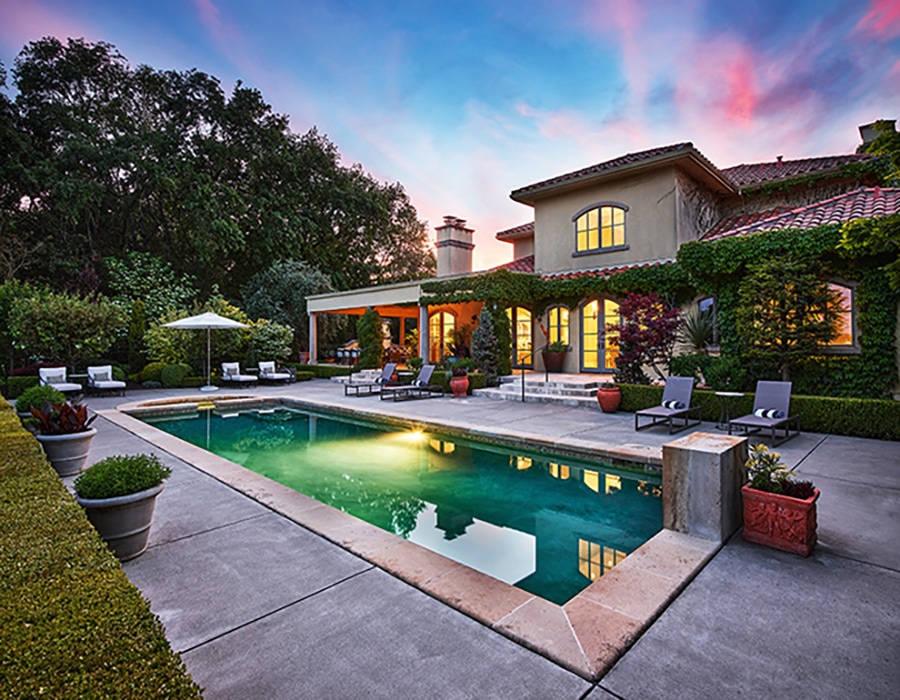To understand fractional ownership, we first need to take it back to the 1970s, when vacationers first saw the emergence of something that at the time was deemed revolutionary: Timeshares, which provided an alternative to whole ownership of a vacation property. For the next three decades, timeshares reigned supreme in the world of one- to three-bedroom hotel-style suites and provided the perfect opportunity to “own” a vacation home with hotel-style services that would otherwise be financially out of reach.
Although it’s grown to be a $10.2B industry, timeshare popularity appears to have reached a crest in the 1990s.
Enter the sharing economy in the 2000s, which gave vacationers more choice, and less commitment through destination clubs and online travel rental portals like VRBO, Airbnb, and HomeAway. In one 2018 study, nearly 70% of respondents to the International Society of Hospitality Consultants’ annual survey said the appeal of timeshares fell as the popularity of home-sharing started to take off, especially in the luxury market where most timeshares cannot complete.
The rise of vacation rentals was two-fold: As guests felt more confident staying in strangers’ homes, more homeowners opened their doors to strangers. A look at Airbnb’s data shows this plainly. In 2014, Airbnb hosted about 10 million guests who stayed in any of the 800,000 listed homes worldwide. Fast forward to 2019, and about 2 million people were staying in an Airbnb each night, in as many as 6 million rentals around the world. Only a very small fraction of these would be considered luxury homes.
With so much demand for home-sharing accommodations, homeowners saw a path to second home ownership by supplementing their mortgage via vacation rentals. One HomeAway study suggests the average person who rents out their second home collected about $33,000 annually. Good for a vacation home valued under $1 million with low operating costs, but barely a drop in the bucket for a multimillion-dollar vacation villa with professional property management, daily housekeeping, pre-trip planning, and local concierge support. These homes often require $150,000 or more in annual operating expenses.
However, the vacation rental space wasn’t without its pitfalls. Inconsistent (or just plain bad) guest experiences, rising property management costs, and a plethora of unmanaged rental homes had a hand in the rise of the next phase in vacation homes where travelers were craving luxury and consistent quality: Fractional ownership.
And that brings us to now. By 2018, there were 126 fractionally owned properties in the United States, which were most commonly divided into quarter shares.
So, what is fractional ownership, what makes it different, and is it for you? First, let’s answer a few basic questions about fractional ownership.
Fractional ownership FAQs:
How does fractional ownership work?
In fractional ownership, you own a share of the real estate itself and are issued a deed for the property, not a time that you can use the home. This keeps the costs lower than whole ownership, but you still have access to the home if you are satisfied with the sharing model.
Is fractional ownership a good investment?
Compared to timeshares, yes. With fractional ownership, your share of the real estate rises as the value of the home rises with the market, just like whole ownership.
Timeshares do not have a secondary buying market whereby someone is buying the home from the timeshare owners, rather, a timeshare seller must find a timeshare buyer. With no limit on supply, most timeshare owners are conditioned to getting a fraction of their money back when they try to sell, if they can at all.
Can you get a mortgage for fractional ownership?
Yes and no. As it’s still not a widespread financial product, you’ll have to seek out banks that offer mortgages for fractional ownership, as it’s not likely regional or smaller banks would have the systems in place to offer such a loan. However, they are out there.
Fractional Ownership: Pros and Cons
Just like its timeshare and vacation rental predecessors, there are of course drawbacks to fractional ownership. Here are a few of the most pronounced advantages and disadvantages.
Pros
It’s more affordable
Perhaps a $4M home is out of reach, but $1M is right in your wheelhouse. Fractional ownership lets you get the home you want in the most desirable location at the price you can afford. This goes for home upkeep and maintenance, too. By sharing the costs of upkeep, fractional ownership makes long-term ownership a much more realistic possibility.
The home will get some love
No home should sit vacant 48 weeks out of the year. By sharing the ownership, the home will be opened up at regular intervals. Opening and closing windows and doors, running the water, turning on the AC and heater, using amenities like the hot tub and pool—all of these are essential to maintaining the home. It provides an opportunity to identify issues early on and preserve the home’s long-term value.
Peace of Mind
Fractional ownership also means sharing the burden of homeownership. Rather than a single point of failure (i.e., you), you essentially have a group that shares accountability, schedules maintenance, checks on the home, and divides the work and chores that would otherwise be left to a single owner.
But as with anything, there are downsides to fractional ownership.
Cons
Selling can be a tedious task
In traditional fractional ownership, selling isn’t as straightforward as whole ownership. While it’s by no means as hard as selling a timeshare, you’ll have to do research to check on how the ownership is structured and what restrictions may apply with regard to your opportunity to sell your share.
Consensus can be tough
In fractional ownership, you’ll need to decide on everything from decorations to who, exactly, is allowed to use the property in your stead. When you’re working with groups of between four and 10 owners, this decision process can be long and stifling. And when some members want to rent out their share via vacation rentals and others don’t, it can lead to discomfort between the group, at best.
You’re tied into one location
In most cases, fractional ownership is tied to one property. If you or your family likes variety, this arrangement can be limiting. Some properties are part of an exchange program, allowing owners to trade their nights for another location with equal value. But most owners find it very challenging to match the location with the time of year they like to travel.
Restrictions may be present
As with vacation rentals and vacation properties, fractionally owned homes could be subject to HOA restrictions, banned outright in certain areas, or hit with new forms of taxes aimed at homes that offer transient usage like rentals.
So, what came next?
We’ve seen what happened to timeshares over the last 30 years, and we’ve seen the bumpy road vacation rentals have taken—with an uncertain future. Now, with fractional ownership on the rise, a new form of ownership that began in 2006 by an innovative vacation home investment company, has demonstrated success in offering the best way to own and enjoy a collection of vacation homes in a diversified manner.
Luxury Residence Funds
Buying into a Luxury Residence Fund offers accredited investors the chance to see returns from traditional real estate appreciation through a diversified portfolio of luxury residences around the world. And just like fractional ownership, the homes in the portfolio are yours to use when you want and are only available to other investors—not the general public.
So, you get the returns of a passive investment vehicle, the control and peace of mind of a fund manager, and the joy of a vacation home, without ever actually having to take care of it, decide how or when to sell it, or come to a consensus with other owners. That’s the perfect combination for luxury vacation home ownership.
Learn more about Equity Estate’s Luxury Residence Fund here.



